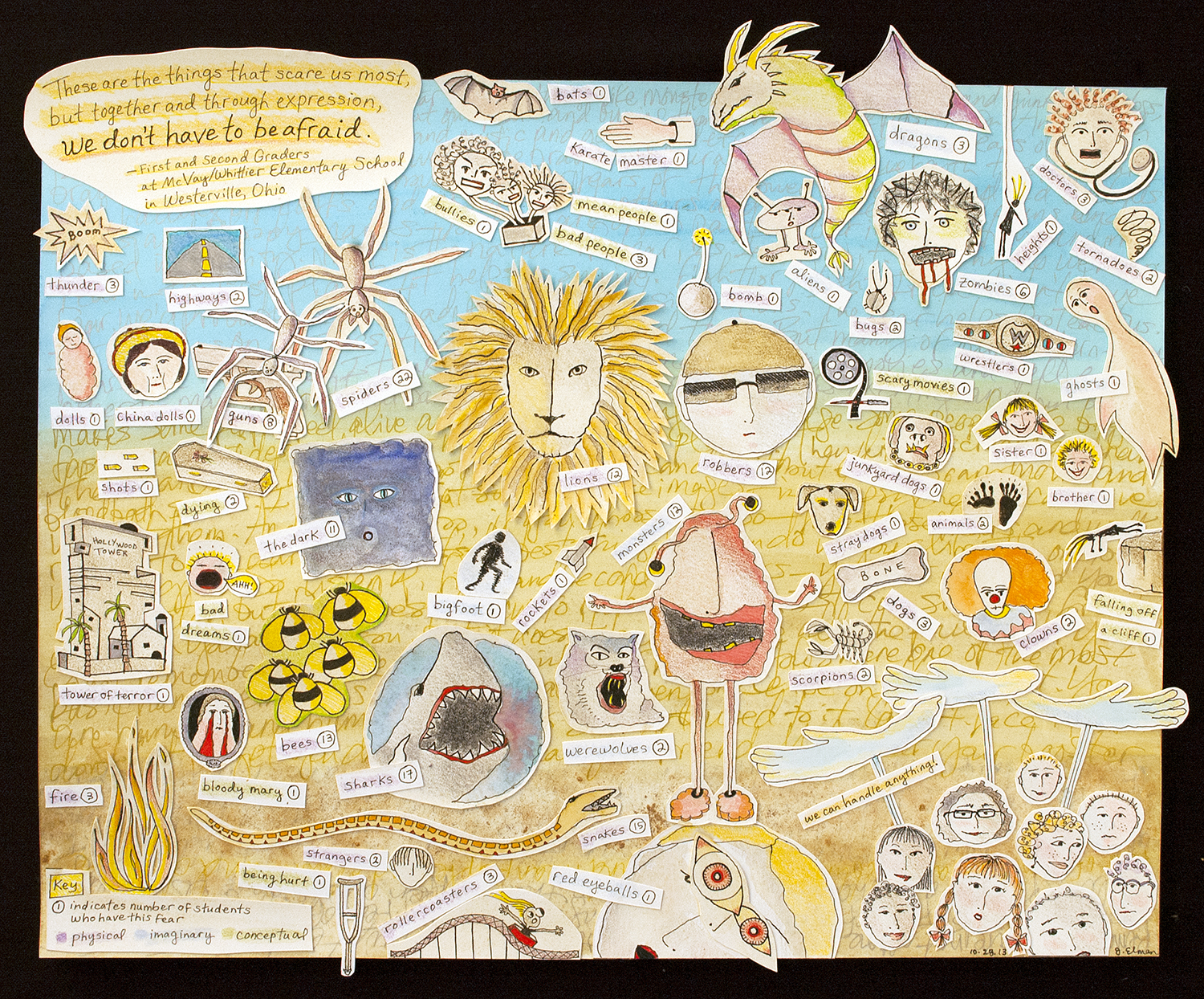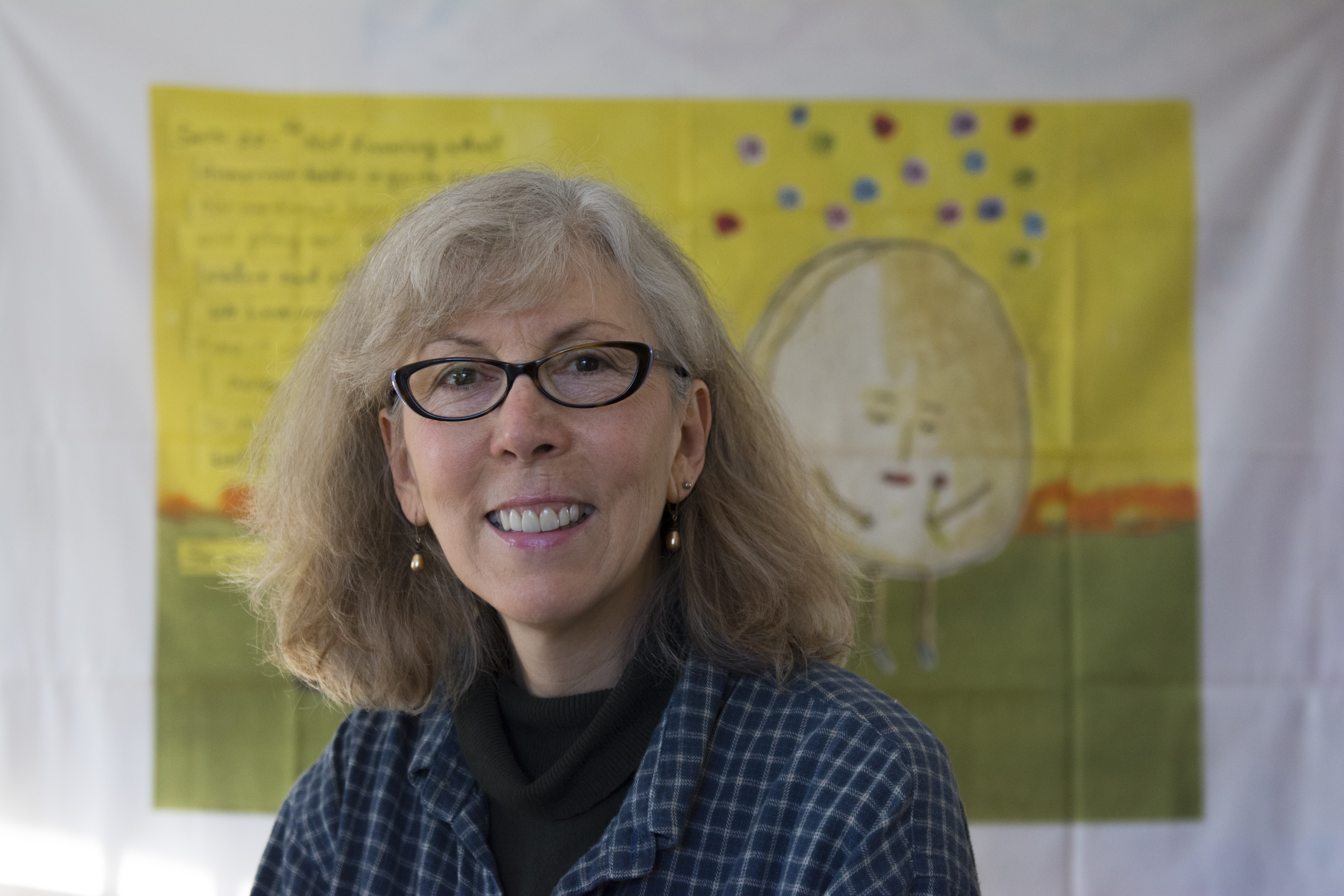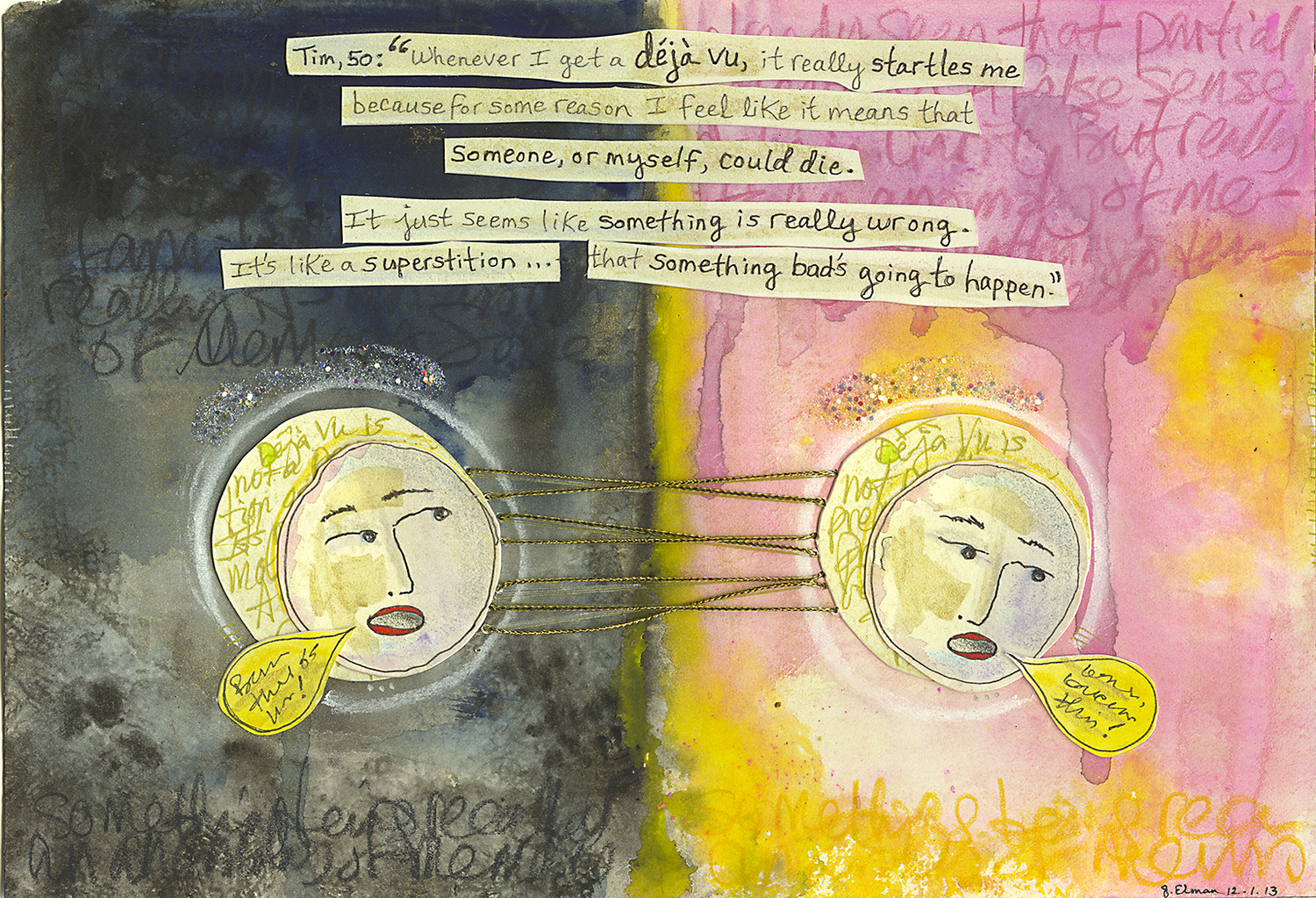
The Idea
The idea for The Fear Project was inspired by a kitchen table conversation. After Ohio University Professor Julie M. Elman asked her husband to describe a personal fear to her, she paired his words with a doodle. Now, three years later, the Fear Project is a visual exploration into what people are afraid of and how these feelings of fear affect their lives.
Elman realized that her talent could be used to visualize and portray the fears that other people cannot fully articulate. Her original vision for The Fear Project was to talk with people about their fears and complete three accompanying illustrations each week until she had finished 90 drawings. Besides keeping to her weekly production schedule, she had only one project rule—never re-do anything.
“I do some sketching, and then I just kind of jump in. It’s almost like this inner compass or something,” Elman says. “I just follow my instincts and come up with something. If I don’t think it’s working, I might cut it up and reconfigure it, but I never start over.”
The Process
Elman collects people’s fears either face to face or through an anonymous form on her website, fear-project.com. Some fears may be disturbing, but Elman says she doesn’t let her work get to her.
“I don’t internalize it. I don’t feel heavy and weighed down. I can’t say it affected me that way,” Elman says. “I feel honored that people would be so open and feel that they can trust me with their fears.”
One of the fears Elman collected came from Tim, a 51-year-old man from Athens. Tim’s illustration reveals his fear that someone may die during his episodes of déjà vu.
“I think [the Fear Project] is a very fascinating, creative idea. I’ve never seen anything like it. I can see how it could be beneficial to some people, and I see how it could even take off more so than it has,” Tim says. “Everyone has fears. And just like anything that’s uncomfortable, if you’re able to talk about it with somebody, it helps,”
Last year, Elman collaborated with a group of 180 first and second-graders at McVay Elementary School in Westerville to do a collective fear piece. Elman was supplied with a list of fears that the students reported. She then combined the fears to make one illustration.
“I was amazed with what Julie was able to come up with,” says McVay Elementary Visual Arts Educator Katie Wirthlin. “It really solidified what [we] were trying to do in terms of getting the students to really think about things that they were afraid of and to learn how to cope, deal, and move beyond them.”
Elman’s work now includes over 200 pieces. She uses pen and ink, colored pencil, gouache watercolors, string and stacked paper to create her artwork.
Elman sells her original illustrations at the Starbrick Cooperative Gallery in Nelsonville, she also offers the customers prints and postcards.
The Impact
Elman also occasionally draws a fear that derives from a national news story. She of those include:
- The Boston Marathon bombing
- The Newtown, Connecticut school shootings
- Robin Williams’ death
- The Ebola virus
- The killing of Charlie Hebdo’s journalists in Paris.
While The Fear Project began as mere table conversation, it now serves a powerful purpose. Elman says participants of the project have expressed positive reactions about seeing their fears illustrated. Many people also convey gratitude for the opportunity to release them. And as for the global reach of Elman’s artwork, The Fear Project’s shareable form can help others find solace in knowing that they are not alone.


